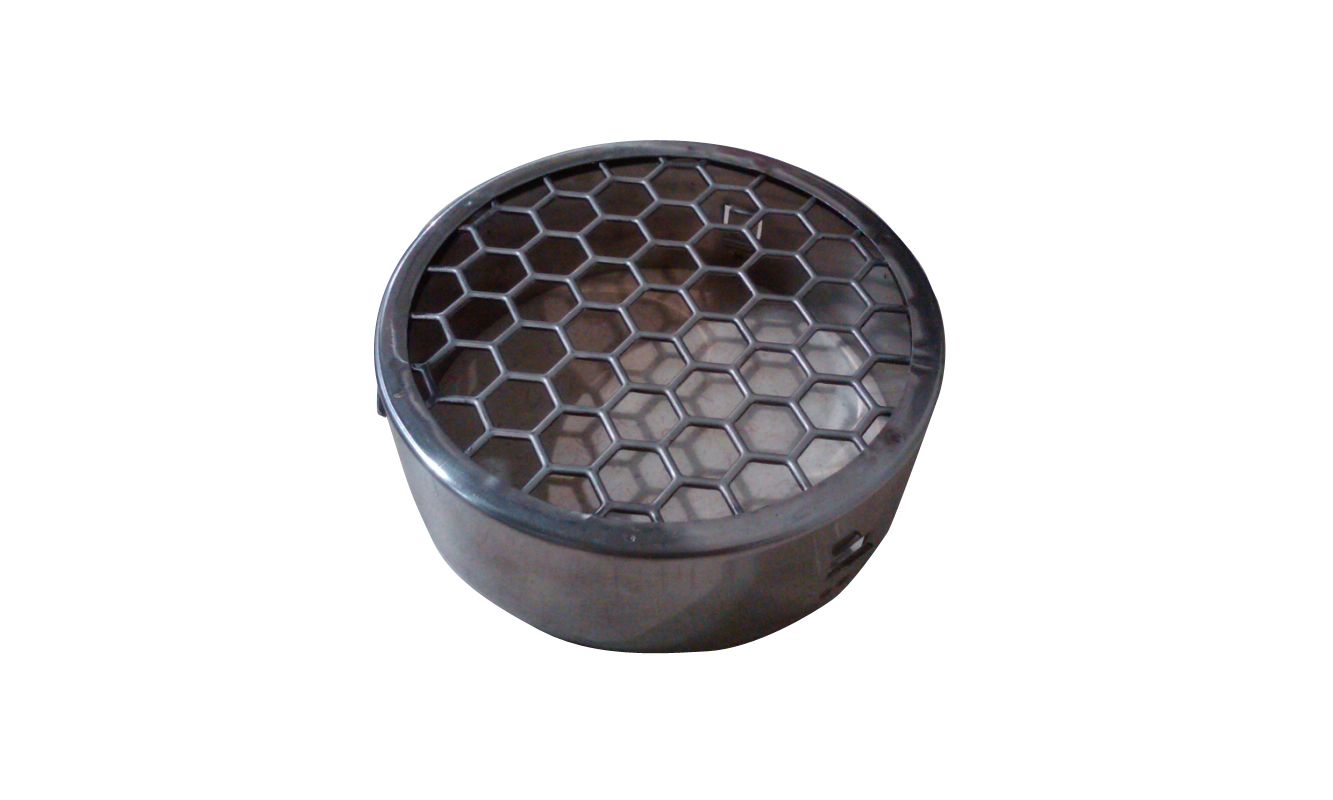I am a DIYer, so your kind patience appreciated. We just move into a new (to us) existing home which has a downdraft cooktop in the kitchen. The 4" downdraft exhaust goes down into the cabinet the space beneath, joins to a 6" thinwall PVC tube coming up from the foundation, then makes a tight(not sweep) 90 degree turn, then runs approx 30' through the foundation to the outside of the house and exhausts into a small casita about 8x10x10" and the floor of which is about 10" below grade. The outer wall of the little casita box is right against a sidewalk so there isn't room to make it larger.
When the inside of the tube is dry, the cooktop exhaust works just fine.
I must imagine that when the house was built, there must have been another elbow in the casita which turned up, then 90'd (or maybe even 180'd) above grade to keep the rain out. As it is now, the little casita fills up with water every time it rains. Unfortunately the tube through the foundation must be higher at the casita opening than just below the cooktop because the tube below the cooktop fills up with rainwater. I am guessing that if it doesn't rain for a really long time, that the water will eventually evaporate and the exhaust can then work normally.
I have pumped the water out once, built a 4" periscope PVC contraption to fit into the opening in the casita. There really isn't room to try to use solvent pvc glue and insert a 6" tube and elbow into the 6" thinwall, so I used a fairly tight fitting 6" rubber gasket/grommet/thingy I bought, around a 4" tube insert into the thinwall sealed with lots of exterior silicone caulk to keep water from entering the tube through the foundation. No cigar. Leaked like a sieve!
So plan B is to push a long 4" black corrugated plastic tube which I can buy at Home Depot all the way from the outside through the foundation and bring it up to the cabinet beneath the cooktop, and join it to the downdraft exhaust. Not sure I can push it given the 90 degree turn, so may have to run a fish wire and pull it through. At the outside it will turn tight enough to bring it straight up from the outlet in the casita, then turn it 180 degrees to keep rain out of the inside of it.
So question number one is will this maybe work or is it crazy and doomed from the start?
Second question is how to keep water out of the tube through the foundation (as I don't fancy the mold potential)? If I use Great Stuff (the low expansion one) around the corrugated tube at the opening (so there will be a 4" tube inside a 6" tube, held roughly centered by the expanding foam, will that keep water out of the tube? Atmospheric pressure is about 14 pounds so it seems like fairly low pressure pushing rainwater past the Great Stuff.
Whew! Thanks for any guidance and ideas you might have.
When the inside of the tube is dry, the cooktop exhaust works just fine.
I must imagine that when the house was built, there must have been another elbow in the casita which turned up, then 90'd (or maybe even 180'd) above grade to keep the rain out. As it is now, the little casita fills up with water every time it rains. Unfortunately the tube through the foundation must be higher at the casita opening than just below the cooktop because the tube below the cooktop fills up with rainwater. I am guessing that if it doesn't rain for a really long time, that the water will eventually evaporate and the exhaust can then work normally.
I have pumped the water out once, built a 4" periscope PVC contraption to fit into the opening in the casita. There really isn't room to try to use solvent pvc glue and insert a 6" tube and elbow into the 6" thinwall, so I used a fairly tight fitting 6" rubber gasket/grommet/thingy I bought, around a 4" tube insert into the thinwall sealed with lots of exterior silicone caulk to keep water from entering the tube through the foundation. No cigar. Leaked like a sieve!
So plan B is to push a long 4" black corrugated plastic tube which I can buy at Home Depot all the way from the outside through the foundation and bring it up to the cabinet beneath the cooktop, and join it to the downdraft exhaust. Not sure I can push it given the 90 degree turn, so may have to run a fish wire and pull it through. At the outside it will turn tight enough to bring it straight up from the outlet in the casita, then turn it 180 degrees to keep rain out of the inside of it.
So question number one is will this maybe work or is it crazy and doomed from the start?
Second question is how to keep water out of the tube through the foundation (as I don't fancy the mold potential)? If I use Great Stuff (the low expansion one) around the corrugated tube at the opening (so there will be a 4" tube inside a 6" tube, held roughly centered by the expanding foam, will that keep water out of the tube? Atmospheric pressure is about 14 pounds so it seems like fairly low pressure pushing rainwater past the Great Stuff.
Whew! Thanks for any guidance and ideas you might have.

